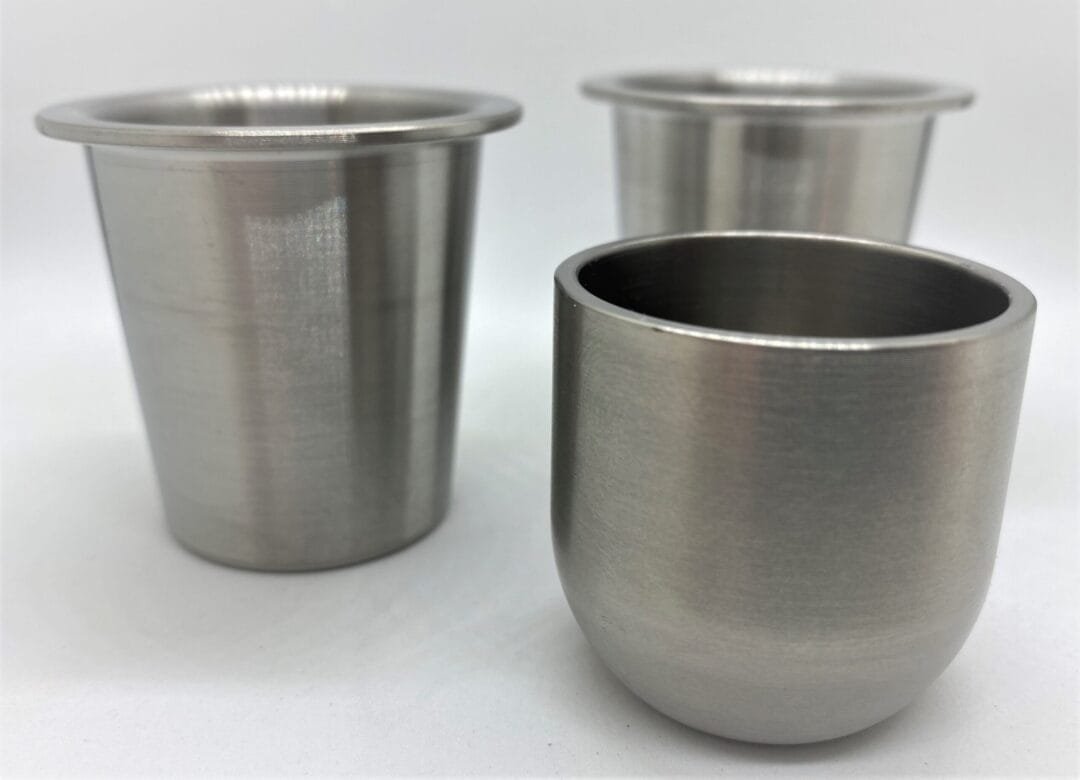Menu
Crucible and Boat Sources are critical tools in various high-temperature industrial processes such as evaporation, crystal growth, and metallurgy. These tools are designed to withstand extreme environments typically required in the processing of metals, compounds, and other materials.
MetalsTek Engineering is a trusted manufacturer and supplier of crucibles and boats. We can produce according to your drawings, with short lead times and good pricing.
In an era where technology demands precise and high-quality materials, the role of crucibles and boat evaporation sources has never been more pivotal. These are not just tools but the backbone of material synthesis and processing industries where precision is paramount.
Crucibles and boat evaporation sources are essential components in material processing, particularly in extreme conditions. Crucibles, which are typically made from durable materials such as tungsten and molybdenum, serve as containers for melting substances at high temperatures. Likewise, boat evaporation sources are employed to evaporate metals for thin-film deposition, a crucial step in semiconductor production and surface coating applications.
Crucible Heaters
Crucible heaters use a crucible, which is a container made of high-temperature resistant materials. The source material is placed in the crucible and heated, usually by an electric filament, to evaporate the material for deposition.
Evaporation Boats
Evaporation boats are another type of thermal evaporation source. They are fabricated from high-melting point materials, and the source material is loaded directly into the boat. The boat is then heated to evaporate the material.
The key differences are:
Both crucibles and boats are designed to efficiently evaporate the source material and produce a uniform vapor cloud for deposition onto the substrate. The choice between them depends on factors like the material being deposited, the required deposition rate, and the specific thin-film process requirements.

Crucible Composition and Benefits
Evaporation Boat Composition and Benefits
Both crucibles and boats are designed to efficiently evaporate the source material and produce a uniform vapor cloud for thin-film deposition.
The crucibles and boats are indispensable in various sectors. In the semiconductor industry, thin films of precise thickness are required which are deposited using evaporation techniques facilitated by boat and box evaporation sources. The solar energy sector also relies heavily on these to produce thin-film solar cells. More uses include:

Selecting the right crucible or evaporation source depends on several factors including the melting point of the material being processed, its reactivity, and the operating environment. Below are the considerations:
Material Compatibility
Temperature Requirements
Evaporation Geometry and Directionality
Power and Capacity Requirements
Practical Considerations
By carefully evaluating these key factors, you can select the most appropriate crucible or evaporation source to enable successful thin-film deposition for your specific application.
Maintaining these instruments involves regular cleaning to avoid cross-contamination and adherence to storage guidelines to ensure they do not degrade. Proper handling ensures longevity and reliability of results in critical applications.
the key maintenance and handling tips for crucibles:
By following these maintenance and handling tips, users can significantly extend the operational life of their crucibles, ensure the purity of their evaporation materials, and maintain the efficiency of their deposition processes.
The strategic importance of crucibles and boat evaporation sources in material science cannot be overstated. As industries strive towards finer and more durable materials, the demand for specialized equipment like tungsten and moly crucibles, as well as boat and box evaporation sources, will only grow. Investing in high-quality, well-maintained tools is crucial for any enterprise looking to lead in the technology frontier.
For industries looking to elevate their material processing capabilities, MetalsTek offers a range of high-quality refractory metal crucibles and evaporation sources tailored to meet diverse needs. Contact us at sales@metalstek.com to learn more about how our products can enhance your operations.